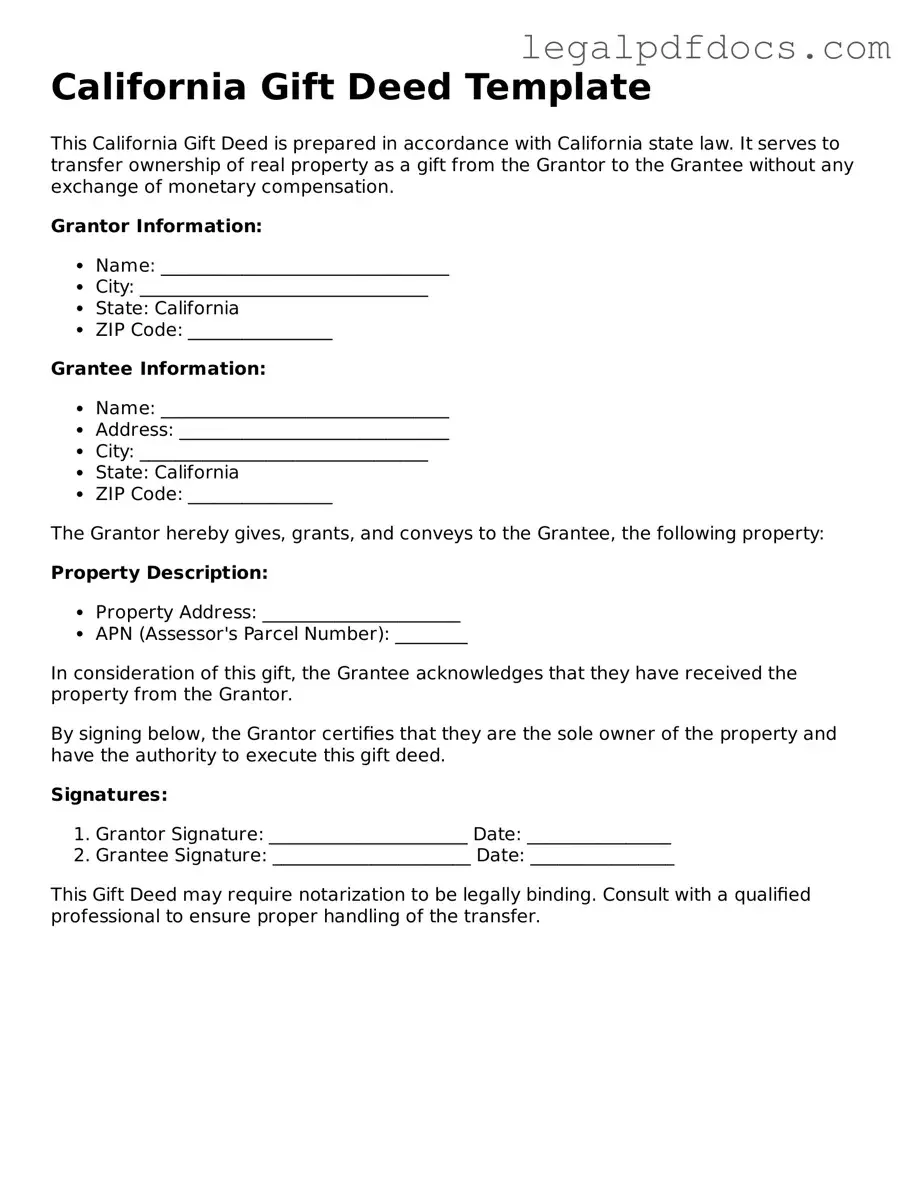The California Gift Deed form serves as a crucial legal instrument for individuals wishing to transfer property without the exchange of monetary compensation. This document allows the donor to convey ownership of real estate to a recipient, commonly referred to as the donee, while ensuring that the transfer is recorded and recognized under California law. A properly executed Gift Deed must include essential details such as the names of both parties, a clear description of the property, and the signature of the donor. Additionally, the form may require notarization to validate the transaction. Importantly, the Gift Deed can have significant tax implications, as it may affect both the donor's and donee's tax liabilities. Understanding these aspects is vital for anyone considering a property transfer in California, as the implications extend beyond the mere act of giving. Furthermore, the form serves to protect the interests of both parties by providing clear evidence of the intent to gift, thereby reducing the potential for future disputes over ownership.
